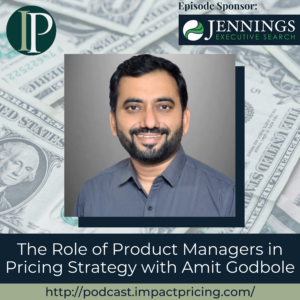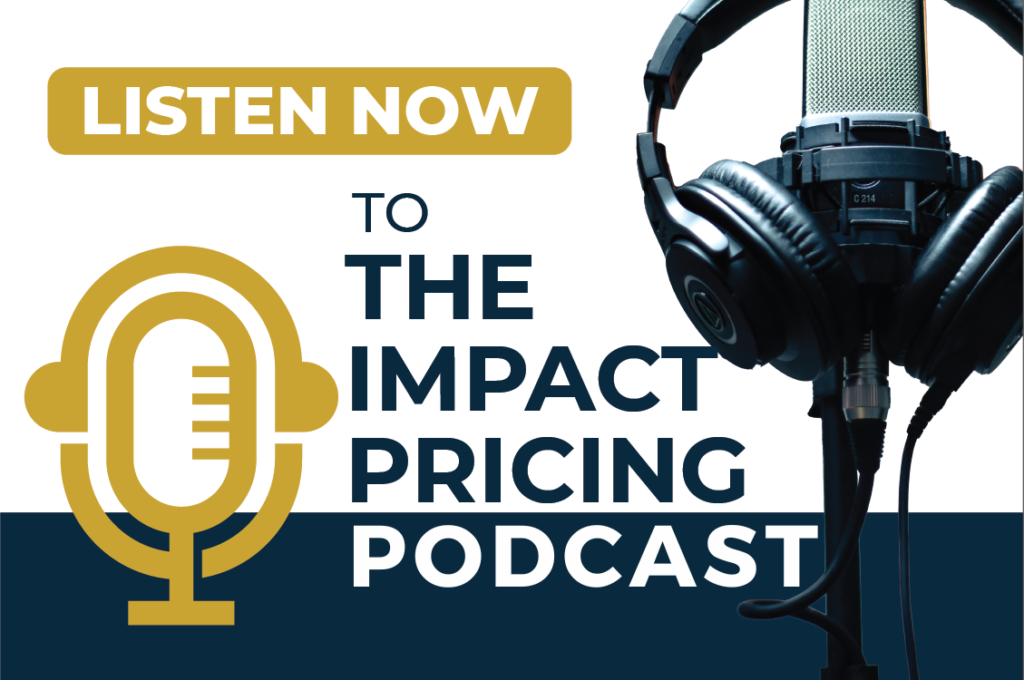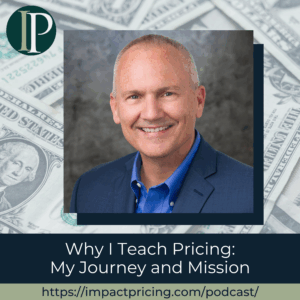Amit Godbole is the founder of ProdSquad, dedicated to simplifying e-commerce technology through improved product management practices. He serves as a fractional chief product officer at FCI CCM and coordinates regional product tank events with Mind the Product, a leading networking organization for product managers.
In this episode, Amit discusses the importance of pricing in product management and how it can significantly impact a company’s success. He shares insights on how product managers can leverage pricing strategies to enhance value for customers and drive revenue. Amit emphasizes the need for product managers to take ownership of pricing decisions, especially in the SaaS industry, and highlights the value of understanding customer needs and market dynamics.
Podcast: Play in new window | Download
Why you have to check out today’s podcast:
- Discover how product managers can influence pricing strategies to drive business success.
- Learn about the evolving role of pricing in product management and why it should be a core focus.
- Gain insights on how to articulate value in terms of revenue, cost reduction, and risk mitigation.
“Discounting typically means you do not value your product, your services, as much as your client does. So, discount should not be part of the strategy.”
– Amit Godbole
Topics Covered:
01:55 – Amit’s unexpected journey into pricing
03:37 – The traditional view of product management and its evolution
04:55 – The importance of pricing in SaaS and B2B companies
05:54 – How product managers can experiment with pricing strategies
07:33 – The significance of understanding customer value and willingness to pay
09:30 – The role of pricing pages in B2B and B2C contexts
11:23 – Strategies for creating effective pricing pages that communicate value
12:34 – The impact of subscription models on pricing strategies
14:50 – The importance of honesty in pricing and customer communication
19:12 – Value-based to context driven pricing
24:19 – Amit’s best pricing advice for product managers
25:10 – Mark’s advice to new pricing analyst
Key Takeaways:
“Pricing, revenue, and commercial aspects were the biggest levers somebody could pull in to get a product to the success they want.” – Amit Godbole
“Product management professionals must understand that value has to be tied to revenue, or a dollar value, because that’s the real value you can create.” – Amit Godbole
“More companies need to be honest or need to help customers choose the right solution. If that’s not right for them, don’t upsell that.” – Amit Godbole
People/Resources Mentioned:
- Mind The Product: https://www.mindtheproduct.com/
- Figma: https://www.figma.com/
- Zoom: https://zoom.us/
Connect with Amit Godbole:
- LinkedIn: https://www.linkedin.com/in/amitgodbole
Connect with Mark Stiving:
- LinkedIn: https://www.linkedin.com/in/stiving/
- Email: [email protected]
Full Interview Transcript
(Note: This transcript was created with an AI transcription service. Please forgive any transcription or grammatical errors. We probably sounded better in real life.)
Amit Godbole
Discounting typically means you do not value your product, your services, as much as your client does. So, discount should not be part of the strategy.
[Intro / Ad]
Mark Stiving
Welcome to Impact Pricing, the podcast where we discuss pricing, value, and the dynamic relationship between them. I’m Mark Stiving, and I run boot camps to help companies get paid more. Our guest today is Amit Godbole. Hopefully I got that right, Amit. Here are three things you want to know about Amit before we start. He is the founder of ProdSquad, whose mission is to make e-commerce technology 10 times simpler, effective, and impactful through better product management practices. I just really liked that phrase. He’s a fractional chief product officer at FCI CCM, and he’s a regional product tank coordinator with Mind the Product. And Mind the Product is probably one of the best networking organizations for product managers. Welcome, Amit.
Amit Godbole
Thanks, Mark. It’s great to be here.
Mark Stiving
It is going to be great to have you. Let me ask, and I know it may not fit you perfectly, but I want to ask that anyway. How did you get into pricing?
Amit Godbole
Well, it happened by accident. I was a product manager in one of the security companies, and then I joined a VC firm where we were evaluating companies. As a product manager, I realized that these companies could make a lot of profit, not by shipping more features, not by creating a mobile app, or not by even going after a new market, but only by changing their pricing. Such a valuable tweak to the product, which could not only bring more revenues to the company, to the investors, but also give us somewhat more credibility in the eyes of our customers. And to my surprise, a lot of product managers were not exposed to this. So then I thought to myself, okay, if there is one area where I want to make the biggest impact as a product management professional, what would that be? And that’s when I thought pricing, revenue, and commercial aspects were the biggest levers somebody could pull in to get a product to the success they want.
Mark Stiving
So, can I say I agree with everything you just said and I’m shocked to hear it. And I say I’m shocked because most product managers don’t think they own pricing or they don’t focus on pricing. They focus on what’s the next product or what’s the next feature that we’re going to go build.
Amit Godbole
Well, that’s been traditionally the way it is. We had the Marty Cagan’s who started with looking at product and pricing. And then we have the newer teams from Marty Cagan’s from the foremost voices in product management and to now newer product managers who are user-centric, discovery-centric. Somewhere along the way, pricing was moved beyond product and moved to commercial teams, which I think made sense to those organizations back then because product managers were very few and they had not much to do. And companies thought of, hey, let’s take some of these beyond that. But then, I think it’s high time product managers, especially in the SaaS world, and when you’re designing the pricing page, when you’re designing what is the best value to your customers, it is important that pricing is something which product managers also look at.
Mark Stiving
I was going to say, I agree with you, but why don’t more firms do that? Why is it that product managers don’t think they own pricing or don’t spend time thinking about pricing?
Amit Godbole
I think it’s evolving. There are a lot of B2C firms that sell directly to customers, especially in e-commerce where you have to experiment a lot. Product managers do a lot of experimentation through discovery calls, through reaching out to customers. And yes, one of the important questions is, would you buy if we increase our prices? Or would you want a discount for you to make the change? So they are kind of involved in pricing by moving the needle so that the customer can make a purchase. But that needs to happen a lot, especially around B2B, SaaS companies, enterprise companies, where you have long sales cycle. That’s where I think the product managers can bring in their experimentation hat and help organizations, you know, give those inputs around pricing. So, yeah, that could happen more.
Mark Stiving
So I, I mean, I can’t agree enough. When I think about product managers and the way I’ve always seen them do their job and the way I do my job and what I think they should be doing, I’ve seen them focus on what are people asking for? What do customers want? They might even think a little bit beyond that and say, what do we think customers actually need? But what I always focus on is value. And so, value to me is, you know, in the B2B world, value is how much more money are we going to make our customers? If I build this feature, do I make them more money? And if the answer is yes, then they’ll probably pay me for it.
Amit Godbole
In product management, somehow the M word is not used that frequently.
Mark Stiving
What’s the M word?
Amit Godbole
Money.
Mark Stiving
Oh, money.
Amit Godbole
Yeah. Well, we think value in terms of, and as I said, you know, moving from how the product management started to where it is now, we kind of think, are we able to, you know, do four-click less for users on our user interface? Are we able to automate some of the tasks? And during those conversations with customers, yes, what is the value you’re driving? And then is that value attached to a revenue or to a number? That has not been used much. And I’m trying to do that, that product management professionals must understand that value has to be tied to revenue or a dollar value because that’s the real value you can create. We are all for profit businesses.
Mark Stiving
So, I often say in B2B, value is measured in incremental profit. And that incremental profit comes from one of three different places. It either comes from increased revenue, decreased cost, or reduced risk. And they actually go in that order, right? So if I could show a company how they’re going to make more revenue, the CEO loves me. If I could show a company how we’re going to reduce costs, the COO and the CFO love me. And if I could show people how they’re going to reduce risk, nobody actually cares because nobody wants to buy insurance. So, that’s how I think about value when I’m thinking B2B, can we articulate it in one of those ways that makes sense?
Amit Godbole
Well, I come from an infosec background, so yeah, I have been talking a lot about that. But then later on, I did realize that being part of the profit center, being part of the solution where you help increase revenue for your customers, for your company, that I think makes conversations much easier.
Mark Stiving
Yeah.
Amit Godbole
So, one of my clients was a chemical company trying to sell chemicals online. And we wanted to do that in a no-hands, no-touch way so that, to build the trust for our customers who used to buy chemicals in the more traditional way, we had to use the pricing levers. Tell the customers that, hey, if you buy online, if you buy chemicals through this process, these are more. It delivers chemicals on time, every time. And you also get better pricing because you have less overheads. So explaining that to the customers was I think the job I had and, you know, which would help you make more profits.
Mark Stiving
Yep. Yeah, absolutely. And my preference would be to see if we could sell it online at the same price, where we get the extra profit in our pocket. And we do that through guaranteed delivery or guaranteed service, something like that, ease of use for them. They don’t have to talk to a salesperson, right? Lots of grand value there. And so, maybe we could have pulled that off, who knows?
Amit Godbole
Well, we kind of went a step further than that, just on that topic. As we said, we built something called Autoship, a mechanism where we would deliver chemicals to your doorstep at regular intervals. When we researched, we found out that, you know, nobody needs chemicals only once. We are part of a supply chain. If you need sulfuric acid, hydrochloric acid, that’s something part of your supply chain. What if we could solve the problem of customers even ordering online and we deliver that at regular intervals? That’s great value. Customers loved it. And we went from 20 customers who were our pilot batch, who would say, okay, we need chemicals at regular intervals to about 300 customers.
Mark Stiving
Nice.
Amit Godbole
That helped us in understanding that there is value in repeat customers and understanding attention as well, so. And because it was a subscription model, we could offer some discounts to our customers.
Mark Stiving
Yup. You know, what I love about that story though, is most people don’t think about value beyond the product. And what you just talked about was value around the distribution of the product or how we serve the product. And the value wasn’t the product, right? I mean, certainly there’s still value in the product, but we recognized the value beyond, on the outside of the product, which I thought was fantastic. And not enough companies do that.
Amit Godbole
Yes. Subscription pricing is very difficult, especially because we want to help customers understand that their supply chain is a creature of habit. Continued supply chain, regular uninterrupted supply of raw materials is something that helps keep their production line going. Explaining this, coming up with a hypothesis that this is what customers would want, took us about two months of time. And then I think, yeah, it was a matter of convincing some of them.
Mark Stiving
Nice. Nice. So let’s talk a little bit about pricing pages, if we can. So, when I think about a pricing page, usually it’s B2C. There are a bunch of people that are doing B2B. And in the B2B pricing pages, oftentimes they’re small dollar amounts. So it’s when we don’t have a direct salesperson calling on a customer. So what do you think? Is that the right use for pricing pages or are we not covering enough?
Amit Godbole
A lot of times, in B2C, the pricing pages are only giving partial information. The intent is to lock in the customer now and help them make a decision fast. It is not the right decision all the time. Customers use the ability to make a faster decision and the speed at which they subscribe. That is also the speed at which they unsubscribe. A more mature pricing page, I think, would have, also, the courage, what you’re getting into, especially if you see or in both, but give information and it’s not, it’s okay to make it a little longer. It’s okay to make it a little, you know, dance kind of way where you explain to the customer what they’re getting into. Or answering questions of what customers feel that this sort of pricing delivers the absolute value they are looking for. So if you’re looking for a Zoom call or if you’re looking for a Loom call, this is what you need and that’s what you’re getting into. I feel there are some companies who do a very good job. I was looking at Canva today and they do a good job and I wanted to move from pro to enterprise or higher solution. They said, hey, you don’t need a bigger package. Your existing package has it all. I see more companies need to be honest or need to help customers choose the right solution and if that’s not right for them, don’t upsell that.
Mark Stiving
Yup. Yeah, I would certainly agree with that. Now, when you say that we’re going to add more information, one of the things that happens with pricing pages, when they become too dense, people don’t understand or don’t bother. One of my favorite lines is confused buyers don’t buy. And so, if we write too much stuff, we’ve lost our buyers. How do you recommend we get the information to them without making it look like, hey, you’re about to read a new book.
Amit Godbole
Well, I think you’re right and yes, if you cram in a lot of information there’s a chance that the customer would, you would lose the customer. There is a way to it, and what I think is, purchasing or the pricing purchase decision could be turned out into smaller decision points. This is in terms of the features they need, maybe building that, and then maybe packaging. Those two, three, decisions, if we can take the pricing into smaller decisions, we could still solve the real estate problem and also give customer complete information before they make a decision. I feel pricing itself is a set of smaller decisions. The benefit of this approach is you have the customer for a longer period of time.
Mark Stiving
We’re just being honest with our customers. So, I have a whole lot of thoughts around this. Let me give you two different directions that I would take this or think about it. And the first one is, I’m a huge fan of good, better, best. But good, better, best doesn’t work across the board. Good, better, best works inside a market segment. And so, if we were to help a customer say, oh, you fit in this market segment. So, if we think of LinkedIn, oh, you’re a recruiter. Oh, you’re a salesperson. Oh, you’re looking for a job, right? So, we pick the market segment. Then we could say, here are the three packages you should be considering, right? Good, better, best, which one fits you. So, I love that from a decision process. And I’m going to guide you into the decision you want to make.
The next thing I really like about this is most people, most companies, list features for their good, better, best. So, what features do you get in good? What features do you get in better? What features do you get in best? And I’m not a huge fan of features, but what we could do is we could have mouse overs or click throughs that says, hey, when I get this feature, what does it actually do for me? So, what are the problems you’re solving? What are the results I might achieve because I’ve got this feature? And so, you can now give me that information that the customers really should have and should be thinking through, oh, do I need this or do I not need this? And now they can make an intelligent decision in this world of good, better, best.
Amit Godbole
Well, that’s exactly, that’s a gem. And so, what you’re saying is that we change from a feature-laden good, better, best to an outcome-defined good, better, best. I really love that approach. And I think that when I use Figma, all I want to do is draw one design and Figma can tell me that, hey, this is what you need to just do one design. In fact, there was this tool called Clipchamp, which would allow you to just edit one video. And then later on, they were bought by Microsoft. So yeah, their pricing was so nice. I’m here to just edit one video. Can you help me do that? Yeah.
Mark Stiving
Yup. I think pricing pages are a little, they’re tricky, right? But one of the things that you and I talked about a little bit already and I love is the idea that we could go to the B2C pricing pages, right? Because these guys do A-B testing all the time. They watch what happens. They get so many opportunities to convert customers that we can now look at what they do and steal that and apply that in our B2B world because we don’t get the number of opportunities that B2C customers get, or B2C companies get.
Amit Godbole
Yes. Well, I agree with your view that some of the behavioral science or user segmentation that’s being done in B2C is that they have multiple demographics, multiple size and shapes of customer. Those things can be brought into B2B and you know rather than going with who’s the decision maker, who’s the user or, you know, having only three or four customer segments, we could have maybe more of them and then design the pages to those segments.
Mark Stiving
Yeah.
Amit Godbole
I have a question for you, Mark.
Mark Stiving
Oh, feel free.
Amit Godbole
So, you’ve been a big proponent of value-based pricing. You’ve led so many seminars, and that it’s a concept that’s now being used a lot more. How do you see that evolving now? Because we are here in 2025, 26.
Mark Stiving
Let me talk about two different topics for just a second, if I may. First off, I changed my base level thinking of pricing away from value-based pricing. Now, I didn’t really go away, but I said, look, I really like this idea or this concept of context-driven pricing more than I like value-based pricing. The reason I said that is because I would argue with my pricing friends about what the definition of value was, right? And the way they define value and value-based pricing doesn’t capture all the things we really want to capture.
And so, context-driven pricing has a very simple meaning. It means, charge what a buyer is willing to pay. That’s it. And there are three basic tenets to context-driven pricing. The first one is, willingness to pay is contextual. Meaning, an umbrella is more valuable on a rainy day than it is on a sunny day, right? Willingness to pay is malleable. Meaning, I can have my salespeople help explain the value of my product to you, and the more you learn about my product, the more you’re willing to pay for my product.
Amit Godbole
Amazing.
Mark Stiving
And the third tenet is, willingness to pay is unknowable. So, I can never know how much you’re willing to pay for anything, so I can never be perfect. So, stop trying to be perfect, try to be better. And so, that’s what I think of when I think of what’s the right pricing. Now, even when I talked about context-driven pricing and I said willingness to pay is malleable, I went right back to value, right? What’s the value that a customer is seeing? How do I convince a buyer that there’s more value?
But there are other aspects to willingness to pay because we have these aspects of, you know, emotional, behavioral economics issues. How I present my price to you, right? So all of these things influence your willingness to pay for my product. And they’re important and we want to think through them, but they’re not value. If that makes sense. So, in my head, I always think about context-driven pricing now, as opposed to value-based pricing.
Amit Godbole
That’s very forward-looking, and I think customers, B2B companies will go for it. In the context of large contracts, where B2B companies are pitted against one another, and its procurement teams have the lowest bid wins. I think contextual pricing would be more helpful in there, too.
Mark Stiving
And I think that’s what most people who think about value-based pricing are thinking anyway. They just haven’t articulated it. I think most of us are thinking, how do I get a buyer to pay me more, right? And so, I’ve worked with companies – I used to be in the semiconductor industry, plus I’ve worked with companies where, you know, we would do a contract with a big company and there’s a hundred or a thousand different parts on this one contract. And these are components that they’re going to build into their own products. So, what’s the value of any given component? It’s really hard to go negotiate, oh, the value of this isn’t 27 cents, it’s 29 cents, right? It’s really hard.
But on the other hand, those are the situations where you step back and say, what’s the value of the relationship with that customer? How well are we doing with on-time deliveries? How well are we doing at making sure that they’ve got the right products and the qualities there and they’re never missing their deliveries? And this is where the value really comes in. And we start thinking about what’s the value to the customer, but not from a product perspective, but from a relationship perspective. And now I might be able to get a 9% increase in price instead of a 6% increase in price.
Amit Godbole
I really liked your example of an umbrella on a rainy day and I can relate to it. Yeah. I was recently in London and the weather is as predictable as it gets. So, yeah, I think I paid more price for an umbrella, but then there it was needed.
Mark Stiving
Doesn’t it rain there every day?
Amit Godbole
Well, yeah, the day you least expect they kind of – the rain gods have a way that when you least expect you’re out and then, yes, today it will rain.
Mark Stiving
I have to say, every time I’ve been in London, the weather’s been decent so I can’t complain too much. I’ve been lucky.
Amit, thank you. This has been so much fun, but I do want to ask you one more question and then we’ll wrap it up. What is one piece of pricing advice you would give our listeners that you think could have a big impact on their business?
Amit Godbole
Well, that’s a tough one but I think, discount is not the biggest arsenal in your pricing strategy. Pricing is contextual. Pricing depends upon the value of goods you are providing to the customer. Discounting typically means you do not value your product, your services, as much as your client does. So, discount should not be part of the strategy.
Mark Stiving
Yeah, I think that’s a great piece of advice. Now, sometimes when we think about price segmentation, discounting helps us achieve that, but we reach for that discount lever way too often.
Amit Godbole
I think, Mark, it’s been a pleasure talking to you. We’ve all learned, we’ve all grown reading your books on pricing. And I would like you to, you know, what would be your advice to the upcoming pricing analysts, consultants, people like me? How should we go about in our journey?
Mark Stiving
What a great question, Amit. I’ll give you several answers. One answer is start writing. In 2010, I started writing a blog. I have written a blog every single week since 2010. And so, start writing. When you write, it forces you to think. So it forces you to say, do I really believe this? Or what are the exceptions to that? And then you get people that might make a comment and say, yeah, I don’t agree with that because, for whatever reason. And you start to learn and get to think through this. So I think, write. Go write every day. Create a blog and write once a week and just force yourself to do it.
The second thing I would suggest is, start to create a set of frameworks that you deeply believe in. Feel free to steal all mine, I don’t care, right? But these are ways that you think the way that you say pricing should be. And then as you go around the world, you see something that doesn’t fit. And now the problem is you get to figure out, how do you tweak your frameworks because that doesn’t fit, right? And so, to me, that’s how I built every single framework that I have today, is, oh, that doesn’t fit in the way I think, I have to readjust the way I think. What’s that going to look like? And that’s where we are.
Amit Godbole
Well, it’s such a great piece of advice, Mark. I think, yes, I couldn’t have gone better. I really like our conversation today, and I look forward to a lot more.
Mark Stiving
All right. Thanks, Amit. And thank you very much for your time today. If anybody wants to contact you, how can they do that?
Amit Godbole
Well, the easiest way to reach out to me is LinkedIn. I’ll put my LinkedIn.com slash IN slash A-M-I-T-G-O-D-B-O-L-E. That’s Amit Godbole.
Mark Stiving
Perfect. We’ll have the link in the show notes as well, so. And to our listeners, thank you for your time. If you enjoyed this, would you please leave us a rating and a review? Brian Knowles from VersaBadge left me this on LinkedIn. Actually, this is one sentence but:
Mark’s ability to quickly understand our business and his thorough process was incredibly helpful in getting us to think differently and more strategically about the value we provide to our clients and how we price and package our solutions.
Thank you, Brian. As always, the check is in the mail. And finally, if you have any questions or comments about the podcast, or if your company needs help getting paid more for the value you deliver, feel free to email me, [email protected]. Now, go make an impact.
[Ad / Outro]
















